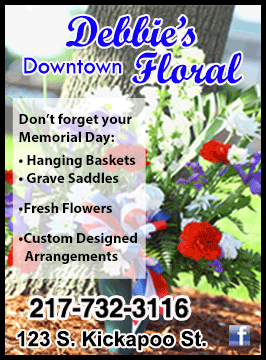Deadly April rainfall in US South and Midwest was intensified by climate
change, scientists say
[May 08, 2025]
By ISABELLA O'MALLEY
Human-caused climate change intensified deadly rainfall in Arkansas,
Kentucky, Tennessee and other states in early April and made those
storms more likely to occur, according to an analysis released Thursday
by the World Weather Attribution group of scientists.
The series of storms unleashed tornadoes, strong winds and extreme
rainfall in the central Mississippi Valley region from April 3-6 and
caused at least 24 deaths. Homes, roads and vehicles were inundated and
15 deaths were likely caused by catastrophic floods.
The WWA analysis found that climate change increased rainfall intensity
in the storms by 9% and made them 40% more likely compared to
probability of such events in the pre-industrial age climate.
Some of the moisture that fueled the storms came from the Gulf of
Mexico, where water temperatures were abnormally warm by 1.2°C (2.2°F)
compared to pre-industrial temperatures. That warming was made 14 times
more likely due to climate change, according to the researchers from
universities and meteorological agencies in the United States and
Europe.
Rapid analyses from the WWA use peer-reviewed methods to study an
extreme weather event and distill it down to the factors that caused it.
This approach lets scientists analyze which contributing factors had the
biggest influence and how the event could have played out in a world
without climate change.
The analysis found a rainfall event of April's intensity could occur in
the central Mississippi Valley region about once every 100 years. Even
heavier downpours are expected to hit the region in the future unless
the world rapidly slashes emissions of polluting gases such as carbon
dioxide and methane that causes temperatures to rise, the study said.

[to top of second column]
|

Two churches, one Catholic and one Baptist are flooded by the
Kentucky River in Lockport, Ky., Tuesday, April 8, 2025. (AP
Photo/Carolyn Kaster, File)

“That one in 100 years … is likely to go down to once every few
decades,” said Ben Clarke, a researcher at the Centre for
Environmental Policy at Imperial College London and the study’s lead
author. “If we continue to burn fossil fuels, events like this will
not only continue to occur, but they’ll keep getting more
dangerous.”
Heavier and more persistent rainfall is expected with climate change
because the atmosphere holds more moisture as it warms. Warming
ocean temperatures result in higher evaporation rates, which means
more moisture is available to fuel storms.
Forecast information and weather alerts from the National Weather
Service communicated the risks of the April heavy rain days in
advance, which the WWA says likely reduced the death toll. But
workforce and budget cuts made by the Trump administration have left
nearly half of NWS offices with 20% vacancy rates or higher, raising
concerns for public safety during future extreme weather events and
the upcoming Atlantic hurricane season that officially begins June
1.
“If we start cutting back on these offices or reducing the staff ...
the unfortunate result is going to be more death. We’re going to
have more people dying because the warnings are not going to get
out, the warnings are not going to be as fine-tuned as they are
today," said Randall Cerveny, a climate professor at Arizona State
University who was not involved in the study.
All contents © copyright 2025 Associated Press. All rights reserved |